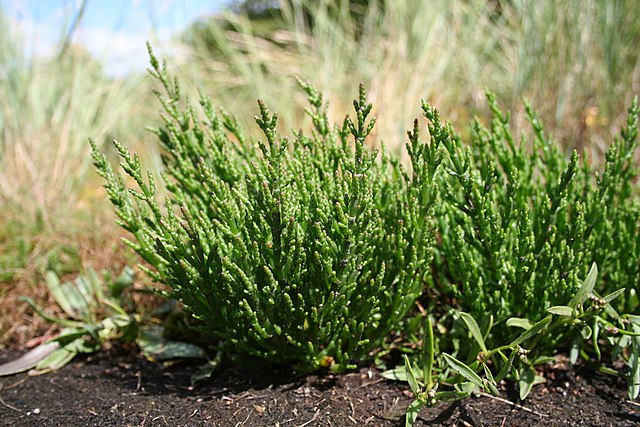Samphire is a name given to a number of succulent salt-tolerant plants (halophytes) that tend to be associated with water bodies.Rock samphire is a coastal species with white flowers that grows in Ireland, the United Kingdom and the Isle of Man. This is probably the species mentioned by Shakespeare in King Lear.
Golden samphire is a coastal species with yellow flowers that grows across Eurasia.
Several species in the genus Salicornia, known as "marsh samphire" in Britain.
Blutaparon vermiculare, Central America, southeastern North America
Tecticornia, Australia
Sarcocornia, cosmopolitan
Norfolk Samphire (Salicornia europaea)
Fresh samphire from the River Loughor estuary for sale at Swansea Market
Salicornia is a genus of succulent, halophytic flowering plants in the family Amaranthaceae that grow in salt marshes, on beaches, and among mangroves. Salicornia species are native to North America, Europe, central Asia, and southern Africa. Common names for the genus include glasswort, pickleweed, picklegrass, and marsh samphire; these common names are also used for some species not in Salicornia. To French speakers in Atlantic Canada, they are known colloquially as titines de souris. The main European species is often eaten, called marsh samphire in Britain, and the main North American species is occasionally sold in grocery stores or appears on restaurant menus as sea beans, samphire greens or sea asparagus.
Salicornia
Illustration of Salicornia maritima
Salicornia europaea
S. rubra at a saline inland habitat






